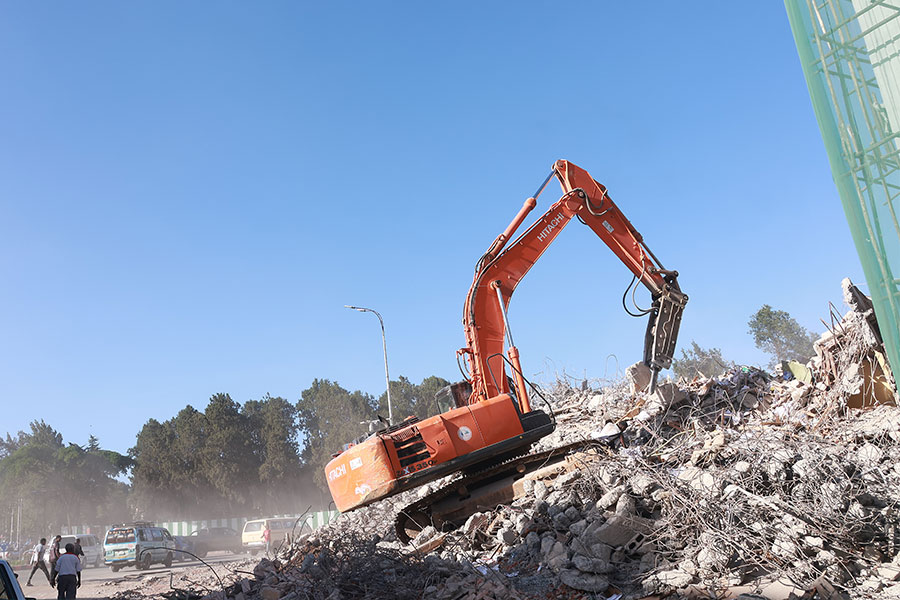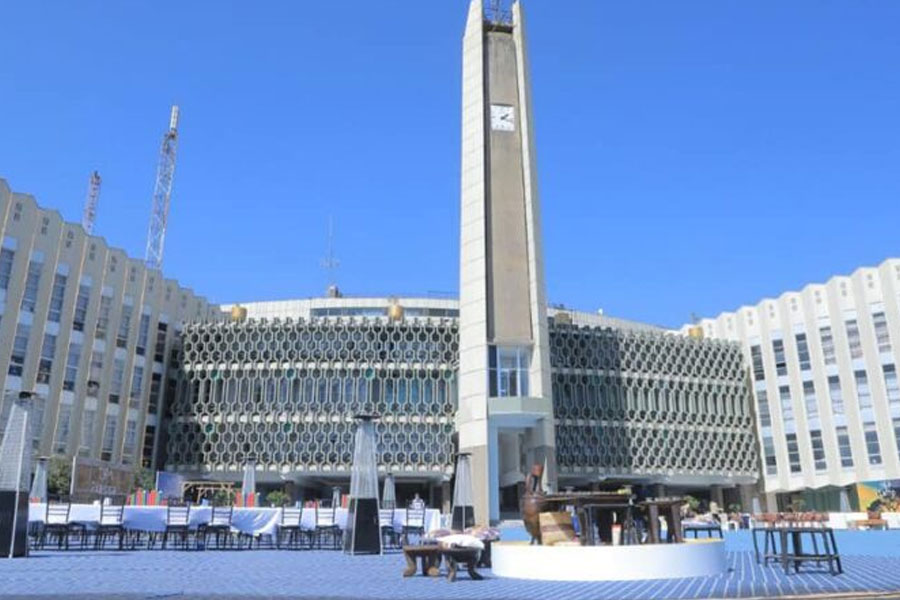
View From Arada | Mar 23,2024
Megenagna, China Camp and Haile Garment areas are reported as the most prominent traffic accident hotspots in Addis Abeba, while Abinet Sebategna, Winget and Bambis areas are reported as the most fatal corridors with a high risk of casualties, according to the latest report by the Bloomberg Initiative.
Heavy trucks and transport providers that carry beyond their capacity are cited as the major causes of traffic accidents, with the road management system entangled in a web of challenges. While fragmented networks, regulatory drawbacks and a dearth of trained human capital are at the forefront, poor planning and substandard quality of the roads remain factors for an increasing number of injuries that lead to fatality.
Out of the 4871 accidents, 23pc were caused by heavy trucks and 17pc due to overloaded vans, according to the report. Over 400 casualties and 3,471 injuries due to traffic accidents were registered in the last fiscal year, with 80pc of the victims being pedestrians. Their performance review showed an increase of one percentage point from the previous year's fatalities and injuries in the economically productive age groups.
The report was availed at the Sheraton Addis, Taitu Street, a fortnight ago. Meron Getachew, the data coordinator and analyst, said empirical trials and professional interventions are necessary to delineate the causes.
Data analysts pointed to overburdened roads that provide reduced mobility for vehicles nearing two million nationwide. This comes amidst poor road infrastructures such as speed controllers and traffic lights.
Coordinator Yonas Legesse urges authorities on the need for special provisions for novice drivers, young people and motorcyclists as they are in a higher risk category placing stricter speeding limits. A study by John Hopkins University reveals that the overall prevalence of speeding above the limit in Addis Abeba remains at 52pc, with motorcycles accounting for more than half of the violations.
"Penalties for overspeeding should reflect the gravity of the offence," Yonas told Fortune.
Ill-trained professionals on safety knowledge were also indicated as another impediment. Meanwhile, the 0.8g level of alcohol content within the blood was spotted to be 0.3g higher than international standards.
Kibebew Mideksa, deputy director of the Addis Abeba Traffic Management Authority, revealed pending legislation at the Justice Bureau that places stringent punishment on traffic violations, including seatbelts, speeding and blood alcohol levels.
"Absence of clear rules has been a problem," he stated.
Kibebew stressed the heavy economic and social burden of traffic accidents on urbanites. He heeded the recommendations, stating the need for increased data collection and professional consultations. While Kibebew foreshadowed the pending introduction of a series of reforms to the legislative grounds of traffic management, he acknowledged gaps in the implementation of existing laws.
Over 1.7 million traffic violations were registered in the capital in the past year, with 45,157 overspeeding violations, 165,615 traffic light trespasses, and 400 caught driving under the influence.
Solomon Adane, director of city police commission traffic monitoring, ascribed a significant part of the blame on drivers who attempt to haul through thousands of miles in a few hours attempting to rack up earnings.
"The shortage of human resources also presents a challenge," he said.
The number of vehicles in the capital has soared past 714,000 with the population projectingestimating five million urbanites.
Ethiopian urban planners echo a similar sentiment, highlighting the underdeveloped road infrastructure as the major culprit behind the high number of pedestrian casualties.
Tebarek Lika (PhD), an urban planning researcher, notes a conflicting set of forces as Addis Abeba has a minimal motorisation rate but high road density and congestion, which inflate the number of accidents.
"Urbanisation has to incorporate transportation features," he told Fortune.
Tebarek referred to the UN's population projection of Ethiopians doubling by 2050, indicating that concentration around the capital is a major concern. He recommends pooling a substantial investment in redesigning the city's transport network by emphasising safe public transport.
PUBLISHED ON
Dec 16,2023 [ VOL
24 , NO
1233]

View From Arada | Mar 23,2024


Fortune News | Mar 20,2021

Editorial | Mar 25,2023

Fortune News | Nov 09,2019

Radar | Jan 23,2021

View From Arada | Apr 16,2022

Fortune News | Dec 04,2022

Radar | May 04,2019

Fortune News | Jan 05,2019

Dec 22 , 2024 . By TIZITA SHEWAFERAW
Charged with transforming colossal state-owned enterprises into modern and competitiv...

Aug 18 , 2024 . By AKSAH ITALO
Although predictable Yonas Zerihun's job in the ride-hailing service is not immune to...

Jul 28 , 2024 . By TIZITA SHEWAFERAW
Unhabitual, perhaps too many, Samuel Gebreyohannes, 38, used to occasionally enjoy a couple of beers at breakfast. However, he recently swit...

Jul 13 , 2024 . By AKSAH ITALO
Investors who rely on tractors, trucks, and field vehicles for commuting, transporting commodities, and f...

Oct 11 , 2025
Ladislas Farago, a roving Associated Press (AP) correspondent, arrived in Ethiopia in...

Oct 4 , 2025
Eyob Tekalegn (PhD) had been in the Governor's chair for only weeks when, on Septembe...

Sep 27 , 2025
Four years into an experiment with “shock therapy” in education, the national moo...

Sep 20 , 2025
Getachew Reda's return to the national stage was always going to stir attention. Once...